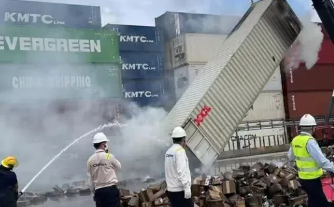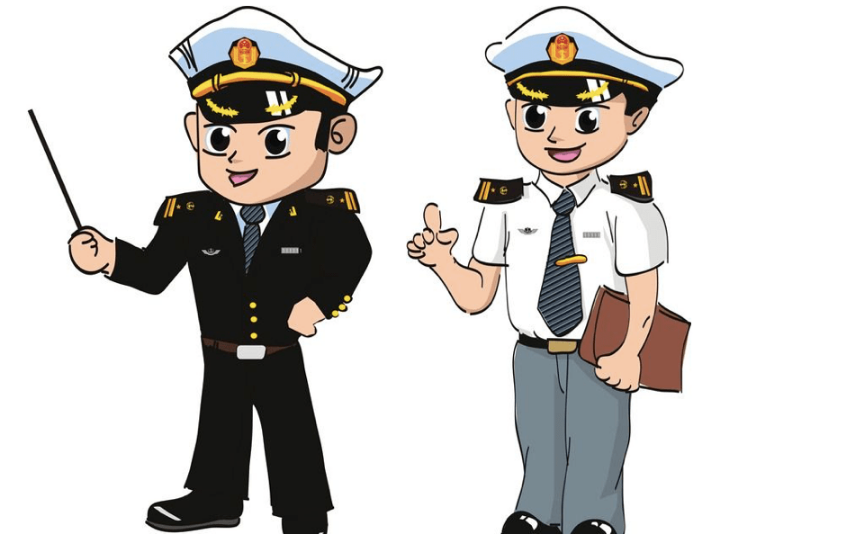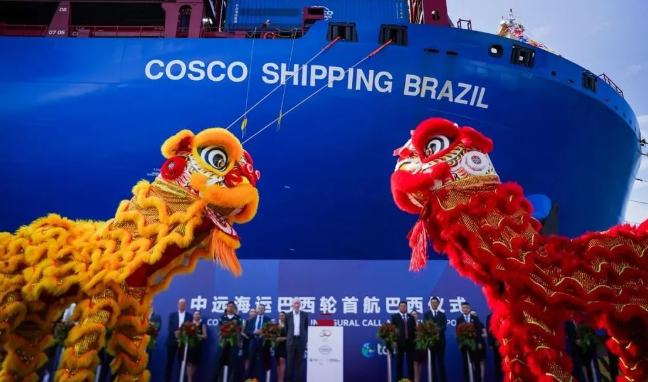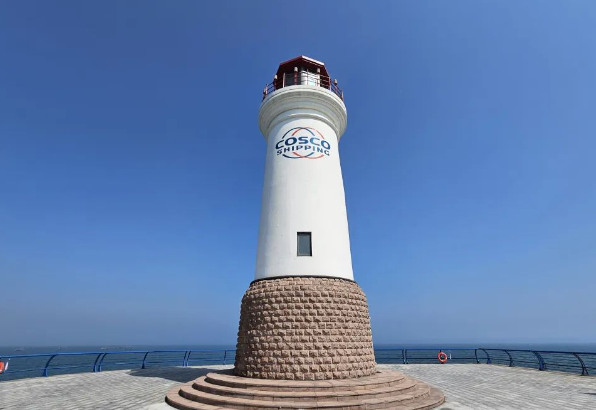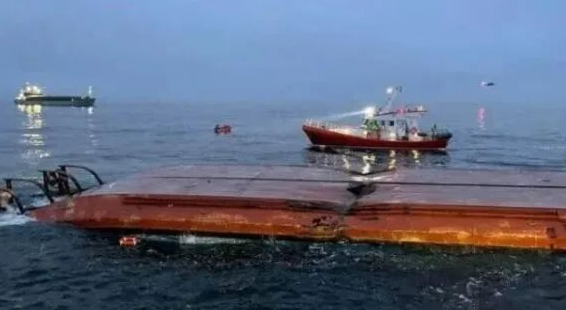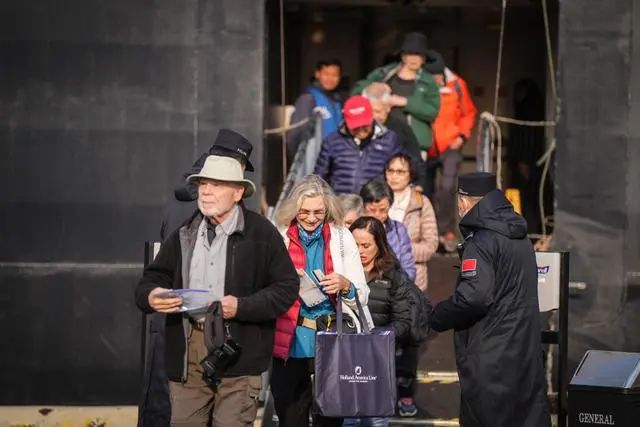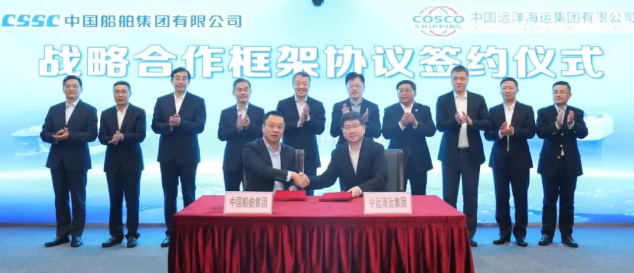面试:二副英语(四)
34.What precautionary measures are to be done 12 hours before arrival at or departure from any port? Ishall test the following before entering or getting underway: (1)Primary and secondary steering gear: (2)Internal control communications and control alarm; (3)Standby and emergency generator; (4)storage batteries for emergency lighting. (5)Main propulsion ahead and astern. 35.What should you do in case of steering failure? Whenthere is a steering failure, I shall report to the master immediately, so that he may take whatever actions are required. At the same time, provided no further incidents occur, hoist thesignals for a vessel not under command. At the same time, inform the engine room anddetermine the time necessary for repairs, if possible, so that the necessary preparations can be made on the bridge. 36.When is great circle sailing most advantageous? Please explain briefly. Theshortest distance between two meridians is the arc of the great circle contained between these two points. The advantages of using the great circle sailing are most obvious in high latitudes, where there is a large difference of longitude between the points of departure and destination. 37.How do you do the chart work? Thechart work must be so detailed that the Master or relieving officer can easily and quicklyfindout the ship’s last known position and from that they can determine its present position. Detailed chart work includes course line, DR position marked with time and distance, observed position with time and distance plus the position fixing method. Special notes like when the Master should be informed and when to slow down, etc. are also needed in some dangerous areas. 38.If a man is overboard, what actions should you take immediately? Ishould throw him a lifebuoy and follow the emergency procedure. That is to say, I should sound the alarm, inform the Master and the engine room, make the Williamson Turn and keep constant lockout. 39.What is confine waters? What factor should you take into account when you make passage plan in the confined waters? Confinedwaters means an area of the sea where the width of the safely navigable waterway is not more than about 2 miles, such as a strait, considering the draft of the vessel and water depth. For navigation in confined waters, I shall consider the following matters in planning a passage: (1)Presence/absence of special navigational rules and items to report. (2)Information on the sailing directions, coast pilot, and so on. (3)The draft of the vessel and the navigable area of the sea. (4)Theeffect of sinkage of the hull (squat) and keeping enough under keel clearance. (5)Tides, and a tidal current. (6)Weather conditions and countermeasures against restricted visibility. (7)Use of navigation aids to give a sign, and setting of Parallel Index (line for avoiding danger). (8) Passing time of danger points (daylight/nighttime)? (9) The degree of congested watertraffic, crowded area with fishing boats, and countermeasures for the above mentioned. (10)The vessel's maneuvering ability. (11)Necessity/lack of necessity for adjustment of the vessel’s speed. 40.What is safety speed during sailing? What factors should you consider in deciding the speed of a vessel during sailing in the sea? Thesafe speed is the speed at which the vessel can take proper and effective actions to be stopped in a safe distance. The following factors should be taken into account to achieve safe speed: visibility, number of ships in the area, the ship' s maneuverability, wind force, sea tide and current, background lights, draught and available depth of water, proximity of navigational hazards, standard and operation of technical equipment on board, ice condition and so on. 41.When navigating in a crossing situation, as master or duty officer, what anticollision measures should be taken? When the vessels are proceed on headon condition, what anticollision rule should be observed? When a powerdriven ship and sailing meet in the sea, what anticollision rule should be observed? When two powerdriven ships are crossing, the ship which has the other ship on her own starboard side shall keep out of way. To do this, this ship can either alter course to starboard side or slow down her speed in order to avoid collision. When two powerdriven ships are meeting headon situation or near headon situation, each ship shall alter course to starboard so that they can pass on the port side of each other at a safe distance. When a ship sails at a higher speed overtakes another ship, the ship shall sails at higher speed or shall alter its course to avoid collision. A powerdriven ship shall keep out of the way of a sailing ship. This can be done either altering its course or speed up to avoid collision. 42.What is ISM Code? How many chapters are there in ISM Code now? What is DOC and SMC? ISMmeans International Management Code for the Safe Operation of Ships and for Pollution Prevention. It is made by the IMO. The ISM Code (as amended) includes 16 chapters falling into two parts: implementation (part one), and verification and certification (part two). The 16 chapters are: general, safety and environment protection policy, company responsibilities and authority, designated person ( s ), master's responsibilities and authority, resources and personnel, development of plans for shipboard operation, emergency preparedness, reports and analysis of nonconformity, accidents and hazardous occurrences, maintenance of the ship and equipment, documentation, company verification, review and evaluation, certification and verifications and control, certification and periodical verification, verification, interim certification, and forms of certificates. The last four chapters are newly added in the new version of ISM Code. SMS means safety management system, and this system is made based on the 16 elements of ISM Code, which is a compulsory part SOLAS74. The shipowner or manager cannot get Document of Compliance (DOC) and SMC without audited Safety Management Certificate (SMC) by Class designated by the flag registry country administration. 43.In case of loss of bridge control, what immediate actions do you take? Incase of the vessel fall into loss of bridge control result from trouble in the main engine, steering gear, etc. , the Officer of the Watch shall immediately take the following measures: *Stopping Engine (in case trouble of steering engine); *Alerting other vessels sailing nearby; (By means of lights for" not under command", whistle or VHF); *Reporting to the Master (Chief Engineer); *Confirming the vessel position; *Estimating the drifting direction and speed. 44.Can you name some publications on board the ship? 下面列举一些海事出版物,供参考。 Standard library on board (applicable for all ships) Name of the publication Published by Location SOLAS 97 IMO Bridge MABPOL 73/78 IMO Bridge MANUAL ON OIL POLLUTION Contingency planning IMO Bridge MANUAL ON OIL POLLUTION Salvage IMO Bridge MANUAL ON OIL POLLUTION Combating oil spill IMO Bridge Load Line 1966 IMO Bridge Load Line Supplementary to Load Line 1966 IMO Bridge COLREG1'972 Revision IMO Bridge STCW95 IMO Bridge IMO Workshop Material On Implementation of Revised STCW Convention IMO Bridge MARSAR MANUAL IMO Bridge GMDSS HANDBOOK IMO Bridge Ship's Routing IMO Bridge Ship's Routing Amendments 1992 IMO Bridge International Code of Signals IMO Bridge Guide to Helicopter/ Ship Operation ICS Bridge Bridge Procedure Dude ICS Bridge Peril at Sea and Salvage a Guide for Master ICS/OCIMF Bridge Effective Mooring OCIMF Bridge。
船员帮
2024-10-19
 船员帮
船员帮


